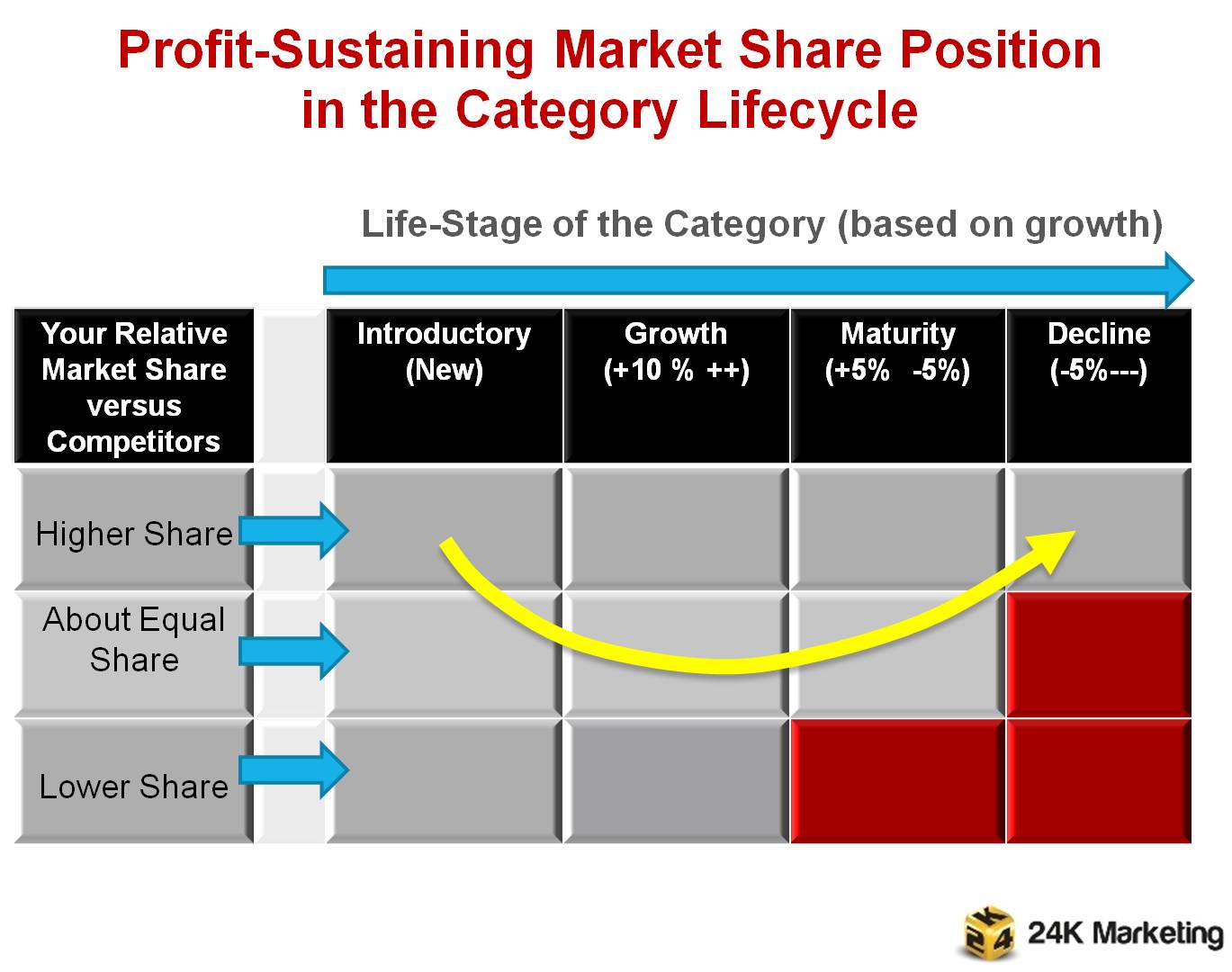The examination of category lifcycles as means to develop winning marketing strategies has marketers thinking in a new way. This is a topic on which I speak often — a mantra of mine. The premise is this: the strongest marketing programs are those that conform to the life stage of the category, rather than the needs of the brand itself. Life-stage appropriate programs lead to more profitable, sustainable market share positions as well.
Strong market share position, relative to other competitors, is important for the brand’s survival as the category moves through its inevitable stages. Optimum market share position should be a primary brand goal. This is depicted in the grid below. Here are three questions that may help gui de you through a quick determination of your business’ market share position compared to the optimal position:
de you through a quick determination of your business’ market share position compared to the optimal position:
1. What is the category in which your business competes?
Determining the category in which you compete is easy, but many marketers confuse the brand with the category. If you market the Apple iPad, for example, your category is tablet computers. If you market the Coca-Cola brand your category is carbonated beverages. Identify the category, not the brand.
2. What is the category’s life stage?
The four stages of the category lifecycle are Introduction, Growth, Maturity and Decline. These stages are determined by several factors, of which the most important is overall sales growth of the entire category over a sustained period. The introductory stage begins the cycle with the launch of an idea that fits a new need. That idea grows and there are few competitors at first. The growth stage has very high growth (+10%) and many competitors entering to unseat the originator. Mature stage categories’ growth has slowed and there are a few big remaining competitors, and the decline stage has negative growth and only one or two competitors. These broad descriptions are generalizations and there are many exceptions.
3. Where is your brand in the The Category Lifecycle?
Once you have identified the category life stage, identify the relative market share position of your brand compared to the top competitors in the category. Is your brand higher, lower or roughly equal? Brands should be striving for the appropriate share placement for profit and survival. The grid below depicts the optimal market share placement of a business (yellow line) at different stages of the category lifecycle. Where does your business or brand exist? Occupation in the red-shared areas are most difficult (e.g. low market share in a declining category), as prospects for growth or sustained profits are limited. It may not always be important to be the market share leader in a category, but it is definitely more important at later stages when the category is no longer growing.
Take a close look at your brand to see what it tells you. To learn more about this important topic, please send me a note as I am happy to discuss the implications of this approach to your business.

